As the monsoon rains drench one of the last remaining grasslands in Rajasthan, the male of one of India’s fastest-disappearing bird species makes its move to woo the female. It folds its legs and shoots vertically upwards to about 2 to 3 metres above the grass, with its partly open wings fluttering and producing a typical sound to attract the female. It is one of the rarest times when you can enjoy the sight of this elusive bird that otherwise remains mostly hidden in vegetation.
Sadly, India is on the verge of losing this dainty beauty to the many threats that have pushed this species towards extinction. This endemic species of the Indian subcontinent is now “critically endangered”, as per the IUCN Red List. This year brings worse news.
“Only five male birds have been spotted this year in Shokaliya and surrounding areas of Ajmer in Rajasthan’s Kekri and Shahpura districts, representing a massive decline of 87.18% from 39 males seen in the same zone in 2020,” mentioned Dr. Sujit Narwade, Deputy Director, Bustard and Florican Program, BNHS.
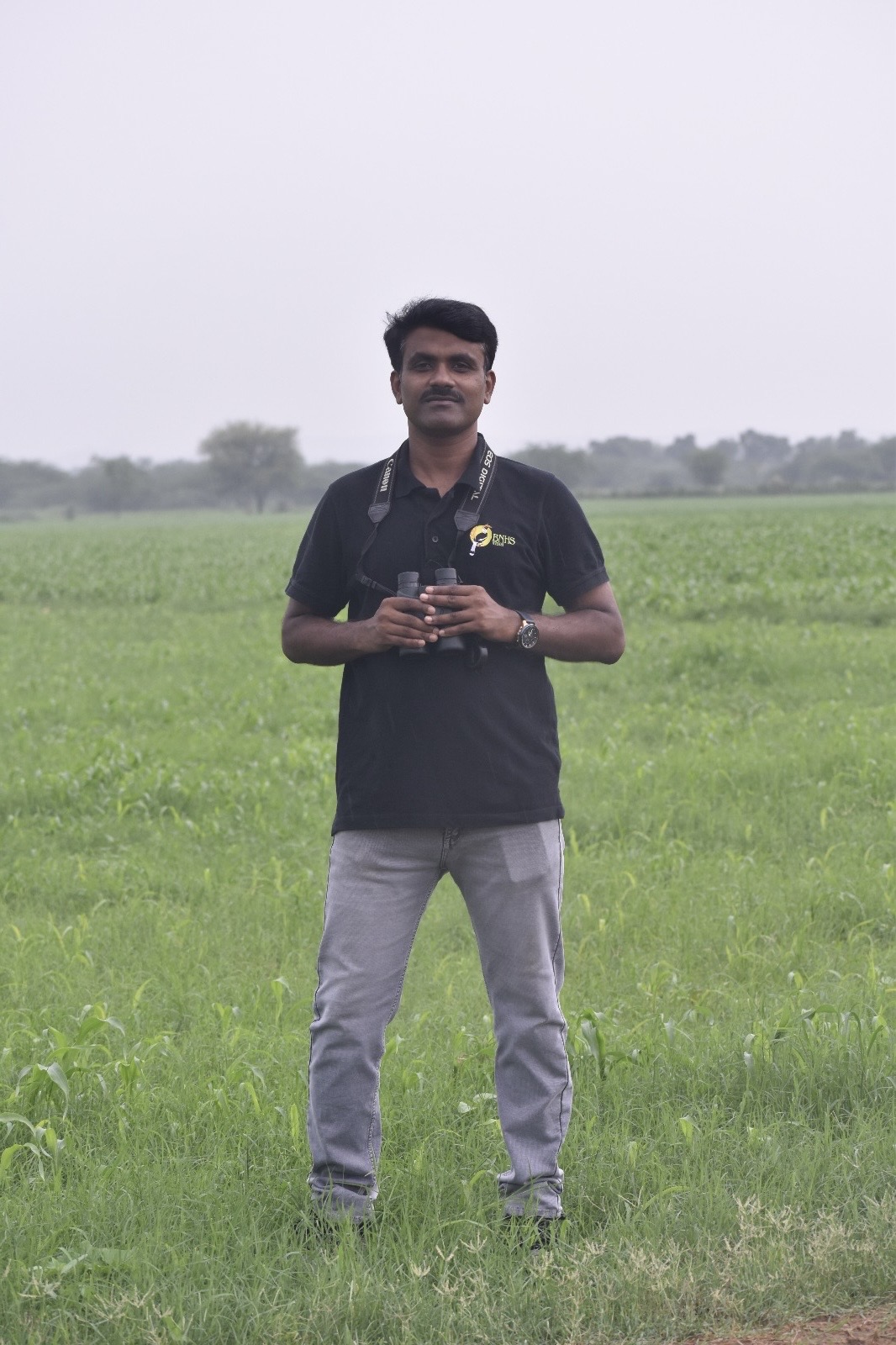
The shocking figures point toward the conservation crisis affecting these birds. So, what are the measures needed to protect them? To answer the questions, we need to first learn about the birds, their habitat, and threats.
The “Grass Peacock” Of India
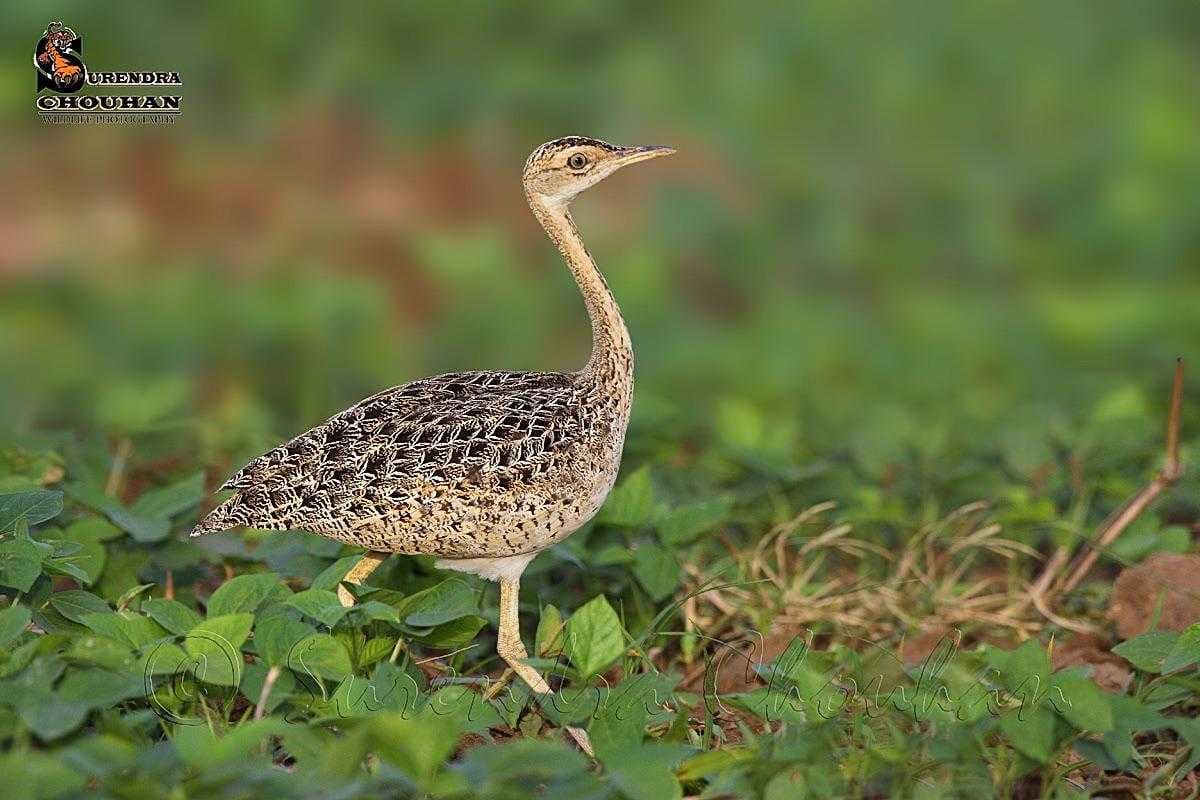
The lesser florican is lovingly called the “kharmor” by the locals in Rajasthan, meaning the “grass peacock,” referring to its grassland-specific habitat and the charming displays of the males in monsoon. The bird was once widespread in its historical range across the Indian sub-continent, but today, its breeding population is primarily confined to parts of southeastern Rajasthan, Gujarat’s Velavadar Blackbuck Sanctuary, and western Madhya Pradesh. In the non-breeding season, the birds are known to migrate to central and south India. Undisturbed grasslands with mixed vegetation are the most preferred habitats for the lesser florican, but such places are almost non-existent. Thus, a mosaic of grasslands and croplands serves as the habitat of the remaining lesser floricans, with the birds favouring areas with crops like moong, urad, and jowar that grow to a height of 50 to 100 cm.
The lesser floricans are not too fussy about their food and have an omnivorous diet, feeding on a wide range of invertebrates, small amphibians, and plant parts.
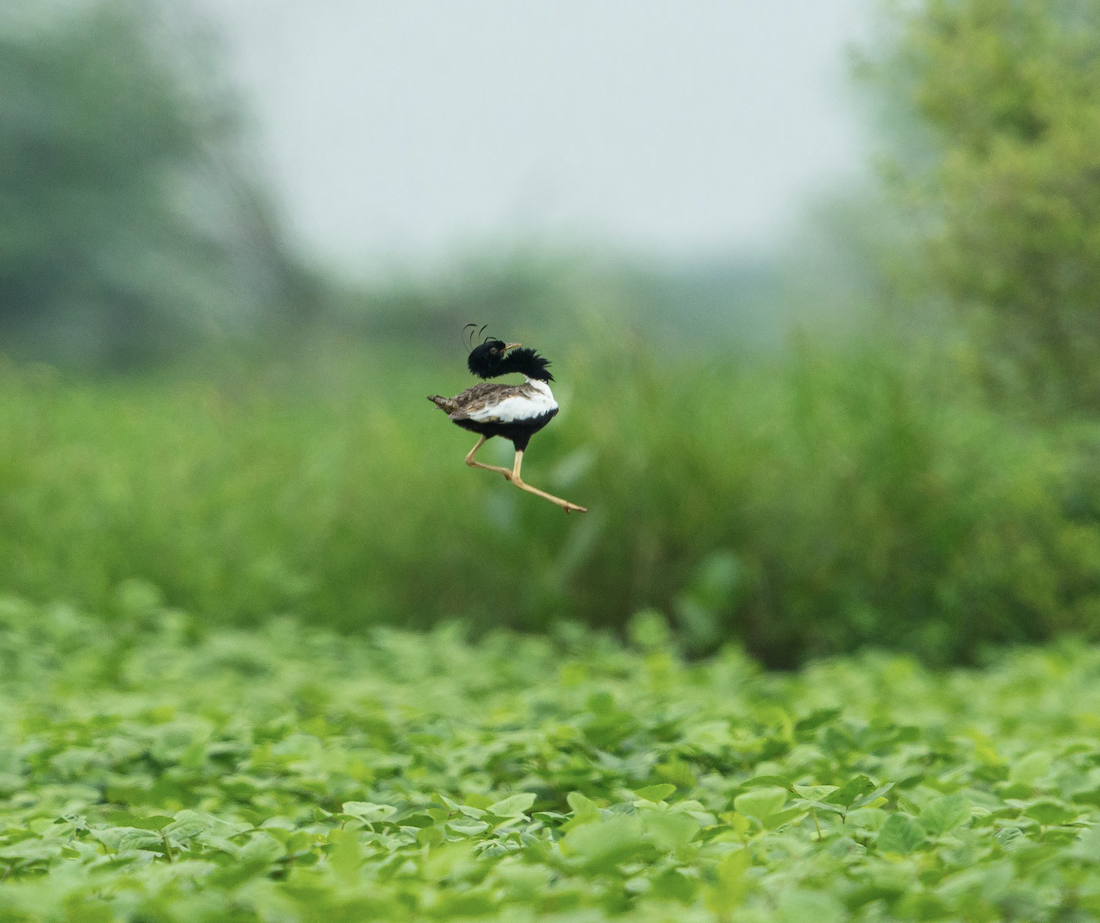
Lesser florican males in their breeding plumage performing aerial displays are a sight for sore eyes. Their head, neck, and underparts are black, while the throat and wing coverts are a contrasting white. The back is mottled with white markings. The loveliest addition to the breeding male’s appearance is the set of ribbon-like feathers arising from the head on each side and curving backward. The slightly larger females possess buff-coloured plumage with black streaks. Outside the breeding season, males also have the same coat colour, making them almost indistinguishable from females.
During the mating season in monsoon, the males work hard to impress the females as part of the exploded lek mating behaviour exhibited by the birds. Here, males hold territory where they perform the display. The male bird leaps up in the air several times a day to impress a female. Areas with short vegetation, flat ground, and good visibility are chosen for the act. Males exhibit site fidelity, returning to the same site for display every year as long as the site does not become unsuitable for the purpose. At other times, these shy birds mostly remain hidden in tall grasses and fly off at the slightest threat.
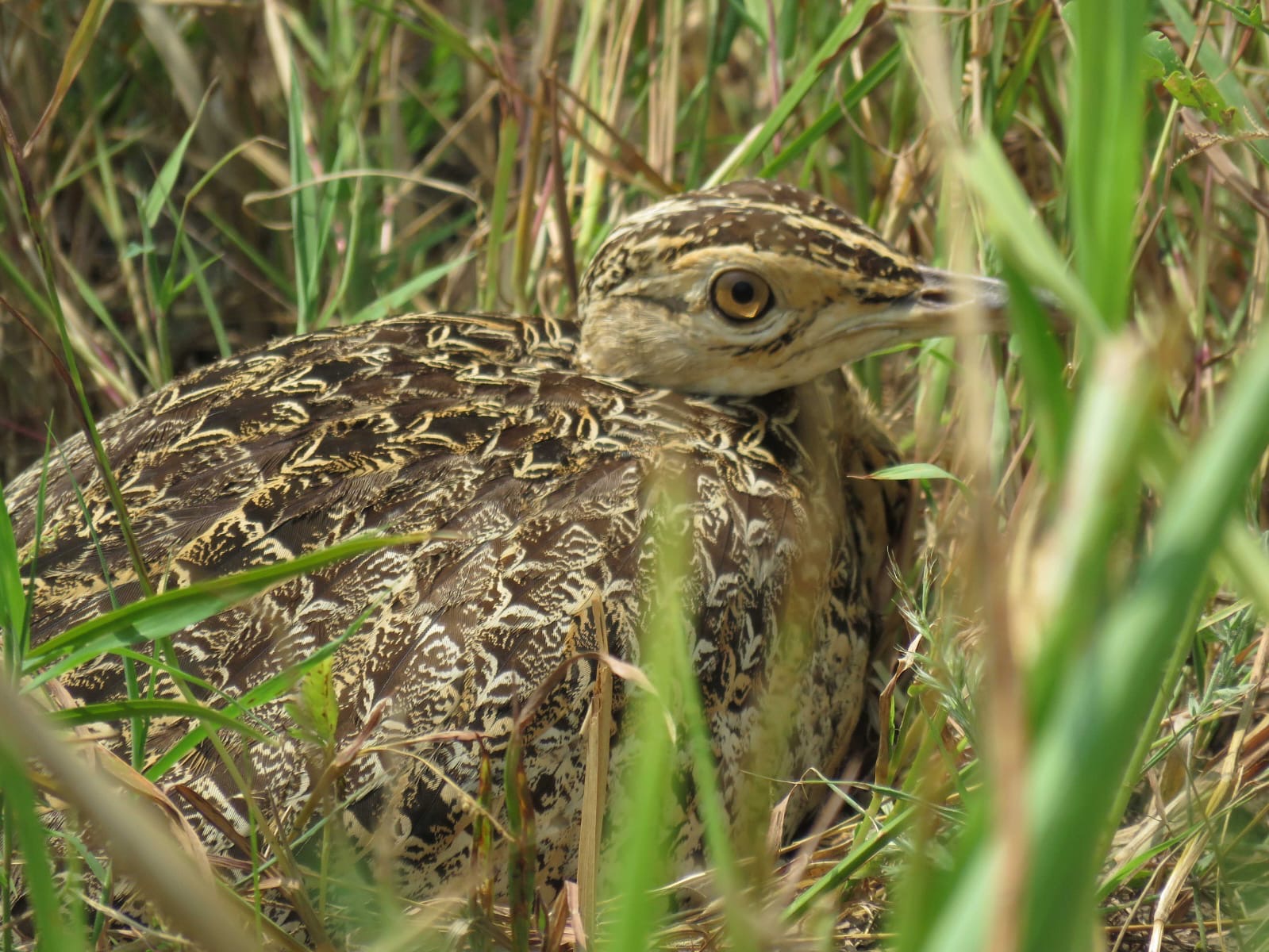
Unlike most birds, lesser floricans lack hind toes, and hence are unable to perch on supports like tree branches or wires. Thus, their movement outside of flying is totally confined to remaining on ground. They also make their nests on the ground. Their nest is a basic scrape amid dense vegetation. Females solely incubate the clutch of eggs of around three to five. The incubation period is around 21 days.
A Bird Battling Many Threats
Indiscriminate hunting was a major threat to lesser floricans in the past. Displaying males became easy targets and were shot down by hunters in thousands, especially during colonial times, for sport. While hunting of these birds has largely stopped in India due to legal protection, the loss of habitat now threatens the future of this species.
“Habitat loss, degradation, and fragmentation comprise the major threat to lesser floricans today. The negligence shown towards grassland conservation has led to these ecosystems vanishing from the country at a fast pace. The lesser florican’s inability to perch on trees and their ground-nesting behaviour makes them extremely susceptible to habitat loss or modification,” Sujit explained the biggest threat to the species.
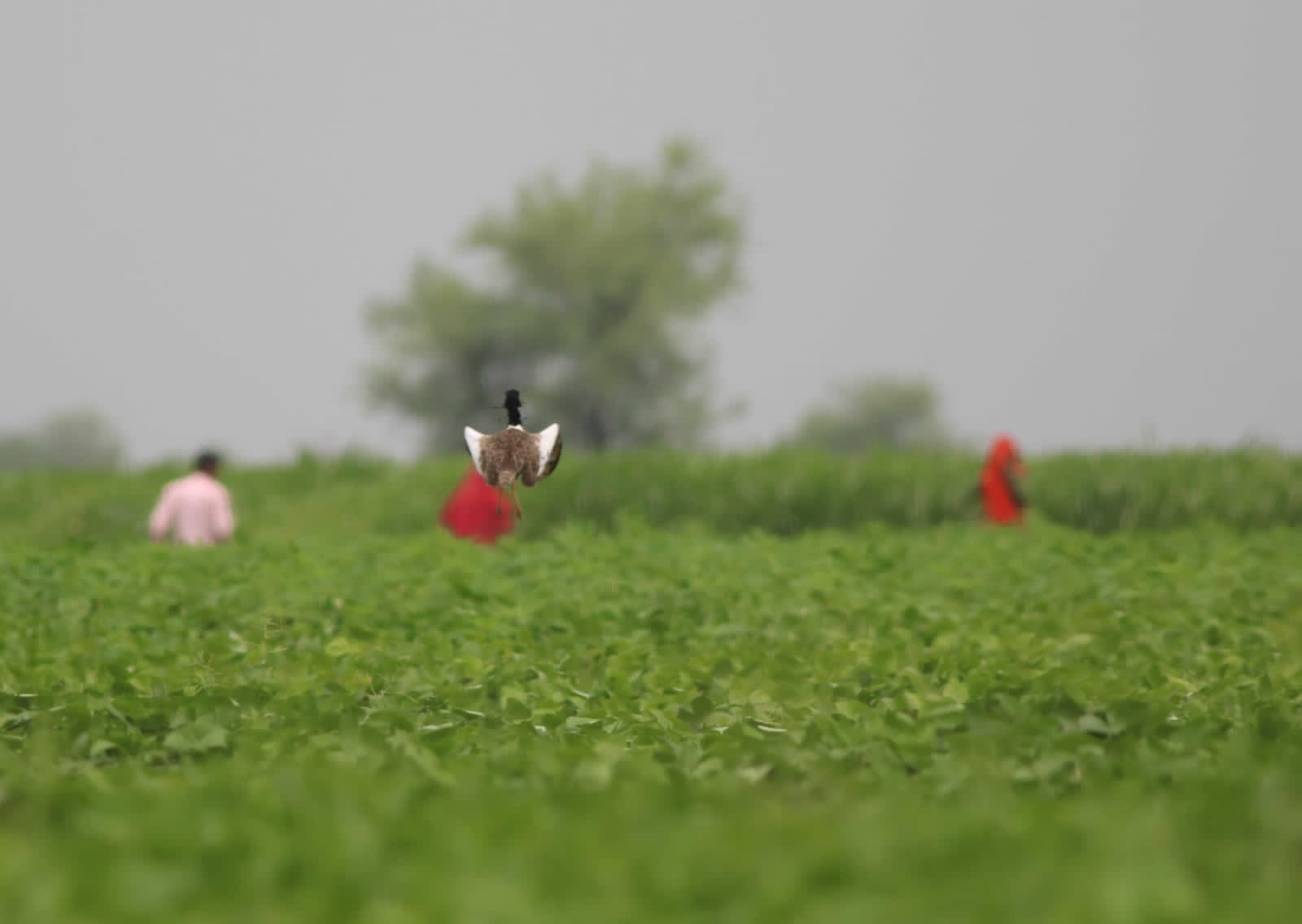
In India, grasslands are often not perceived as natural heritage but as “wastelands” that can be diverted for activities like agriculture and construction. Overgrazing by livestock also depletes the vegetation of such grasslands. Another threat comes from exotic invasive species like mesquite or videshi babool (Prosopis juliflora), which renders the habitat unsuitable for birds.
While the grasslands are vanishing, the lesser floricans have tried to adapt to the nearby crop fields instead, but disturbance in such habitats is extremely high.
“Mechanical farming operations, extensive use of pesticides and other harmful chemicals that enter the bird through its food are all detrimental to the lesser florican’s survival. Predation by feral dogs is also a big threat, and so is collision with power lines,” said Sujit.
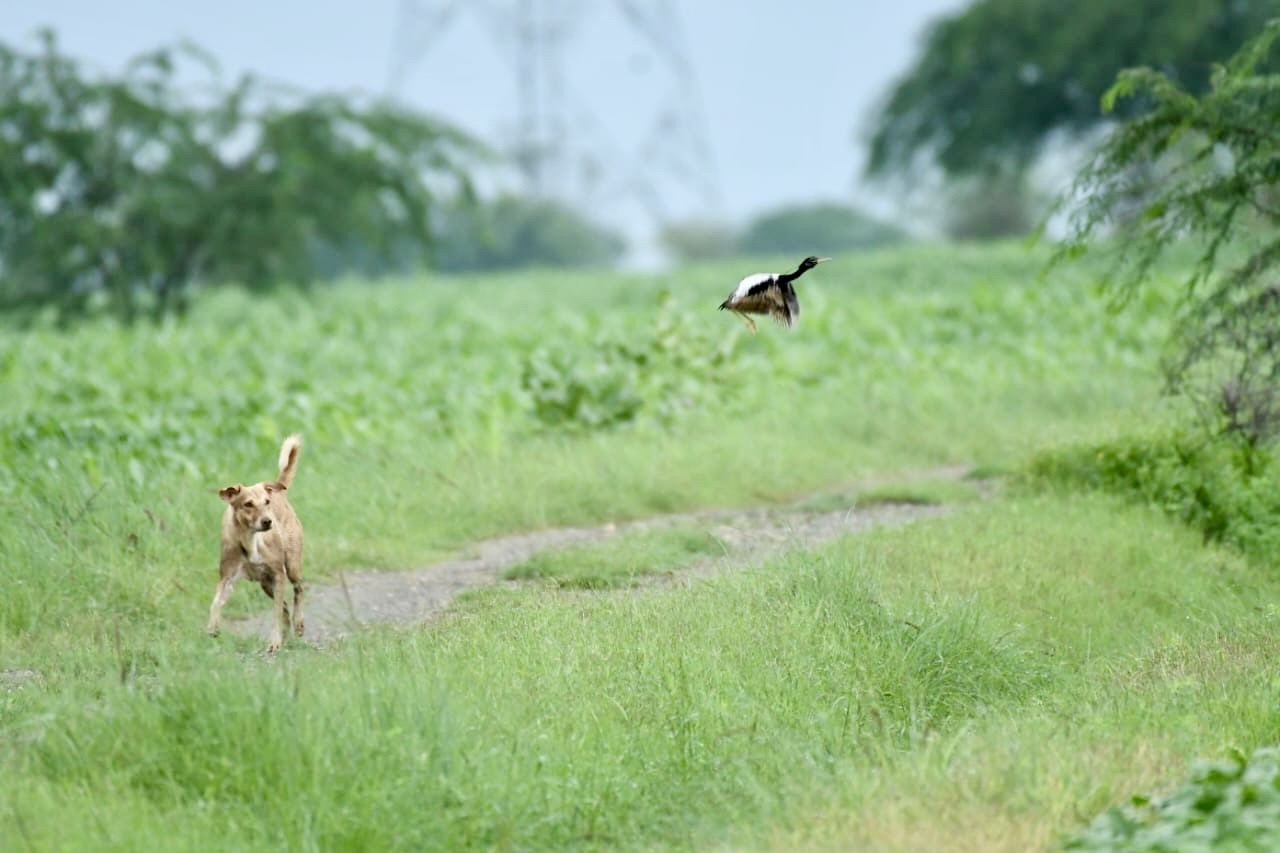
The distribution of the lesser florican depends on the rainfall pattern as well, because of which climate change could be another looming threat. The birds visit the breeding grounds during the peak monsoon season, which is a short window period of three months from July to September. If the monsoon is erratic, it is bound to affect the movement and breeding of lesser floricans. Sujit explains with an example:
“In 2020, the first lesser florican male arrived in Shokaliya, Rajasthan, in the last week of June when there was good rainfall. However, this time, the rains came late, and the first male was spotted in July 25, nearly a month later than in 2020. Also, this year, August was not good for these birds in Shokaliya as it rained heavily, causing extreme waterlogging in the birds’ breeding habitat. It probably discouraged the males from landing at their lekking sites.”
It Is Now Or Never
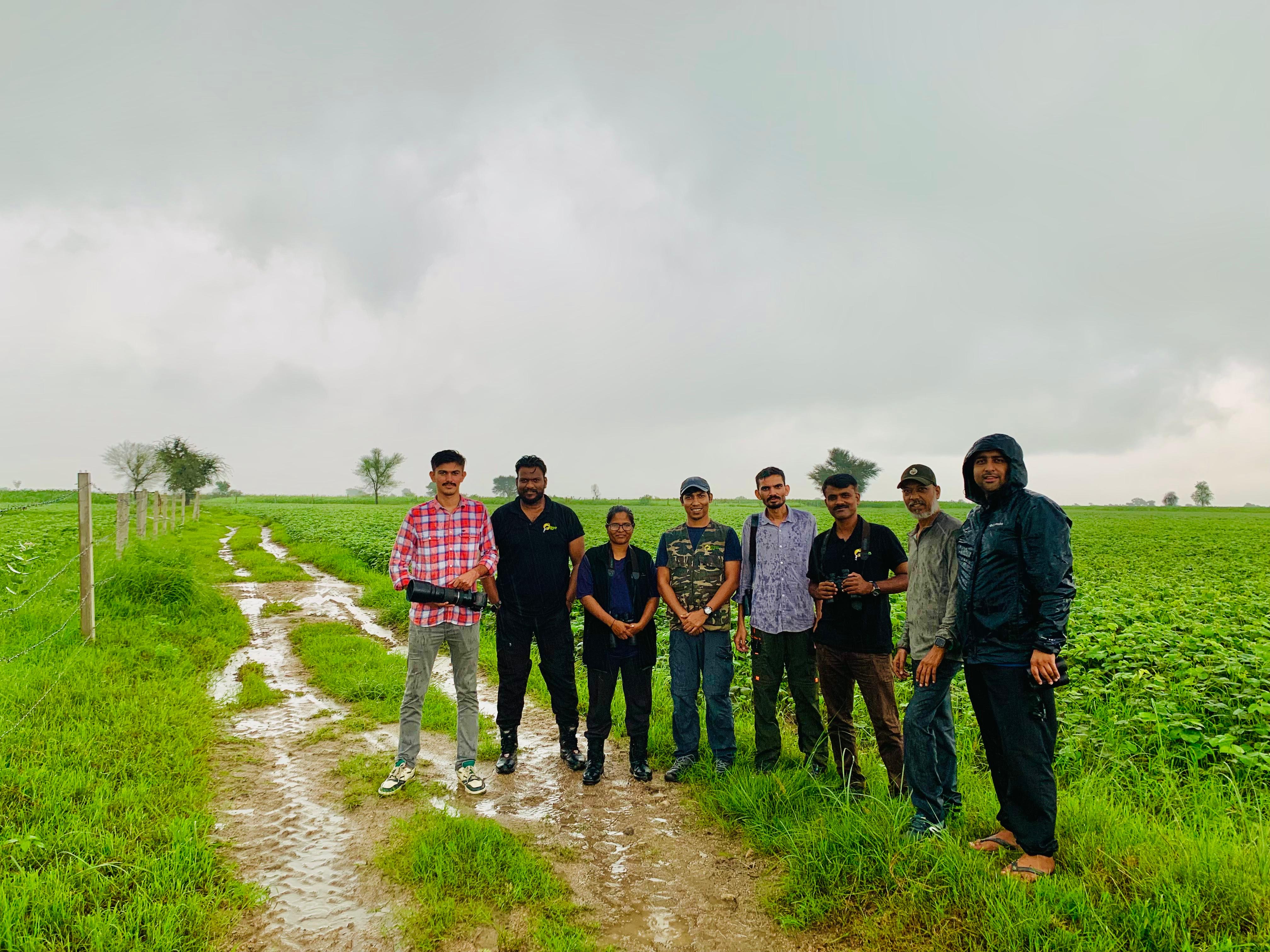
It is quite clear that given the extremely low extant population of the lesser florican and the threats only increasing by the day, saving this species would become nearly impossible if urgent measures are not adopted immediately. So, what can be done?
“Habitat protection of lesser floricans is the need of the day. We need to safeguard both the breeding and non-breeding grounds from threats,” Sujit mentioned.
To achieve this, the BNHS florican conservation team, led by Sujit, is estimating the population and threat status of the lesser florican to design effective conservation strategies. The team is also working with various stakeholders to create disturbance-free lesser florican habitats.
“We are trying to promote florican-friendly agricultural practices and work towards grassland restoration through invasive species removal to provide good habitats to the lesser floricans in parts of the florican range in Rajasthan,” said Sujit.
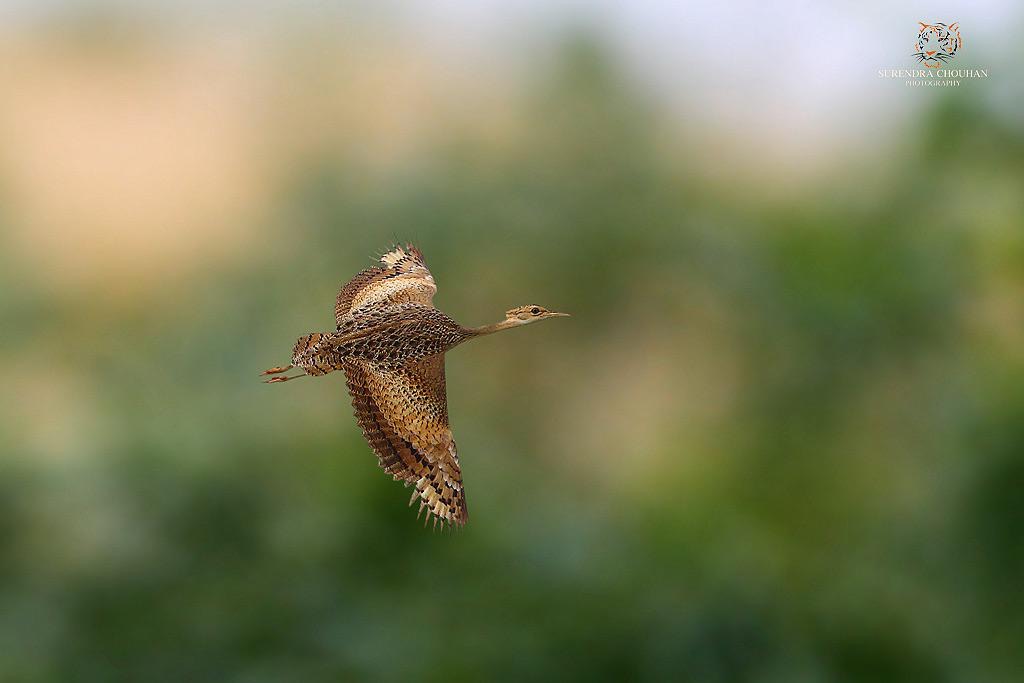
With only a few hundred birds left, time to protect the species is limited. The lesser florican’s decline reflects the loss of our vast grasslands, which science has proven to be vital ecosystems like forests, providing us with numerous ecosystem services. They act as carbon sinks, water catchment areas, biodiversity reserves, and more. Thus, protecting the lesser florican translates to preserving ecosystems on which we depend for our health and prosperity.
So, let us not let go of this leaping beauty of the grasslands, the lesser floricans, from India, and unite our efforts to conserve the kharmor.
Feature image credit: Kedar Bhide

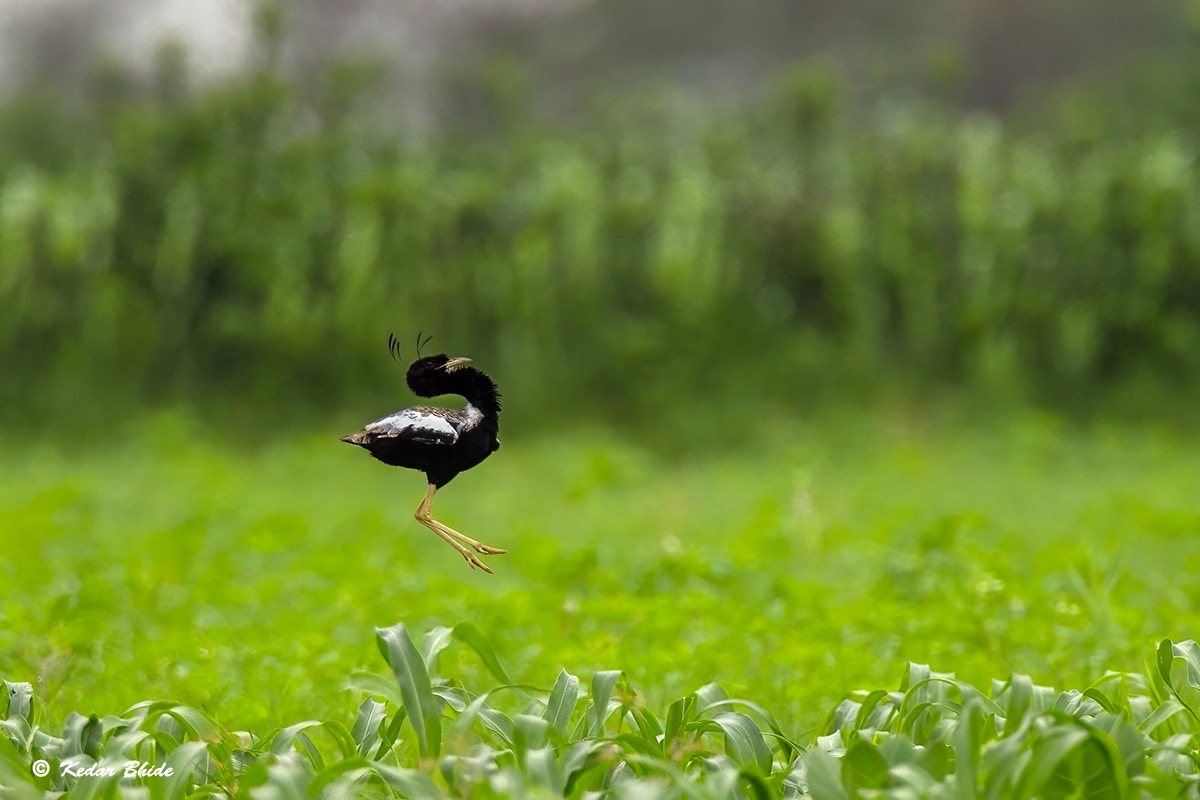
Well written with experience gained on the ground. I wish to know, after so many years of research by numerous researchers, how much have we learned about their migration from non-breeding areas to breeding areas?
Thank you for shedding light on the plight of the Lesser Florican and the critical state of India’s grasslands. It’s alarming to see how habitat loss is pushing such a magnificent bird closer to extinction. The connection between preserving grasslands and safeguarding biodiversity is crucial, and your article highlights this beautifully. I hope more awareness leads to stronger conservation efforts.